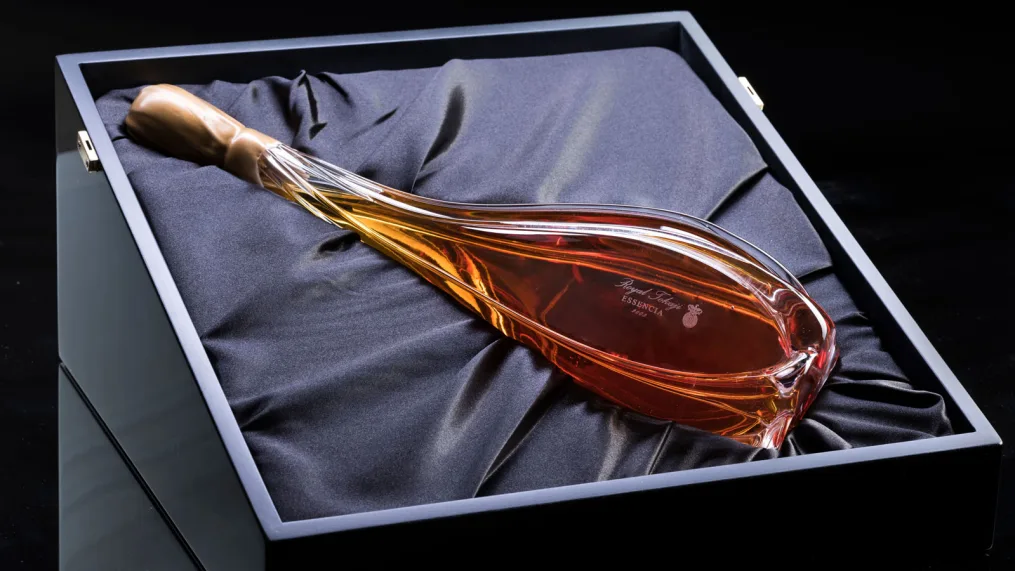The wines of the Hungarian region of Tokaj, or as they say it “toe-kay,” are a window into the past.
The Tokaj region has 5,500 hectares of vineyards and 27 towns and villages. It’s a white wine region best known for its sweet aszú wines, which are made from botrytized grapes, but more than half of the wine it produces is dry. Six grape varieties are permitted to grow in Tokaj. The superstars are the indigenous varieties Furmint and Hárslevelű, with Furmint being the high profile grape that tends to steal the show. Other varieties grown in smaller quantities are Sárga Muskotály, Kövérszölö, Zéta (a crossing of Furmint and Bouvier), and Kabar (a crossing of Hárslevelű and Bouvier). All of these varieties can be used in aszú. A few other grapes are grown in very small quantities (though they aren’t allowed to carry the name Tokaj on their label), such as Pinot Noir.
The unique geological position, climatic conditions, and biodiversity favours the production of complex, natural, and harmonious world-class varieties. And, the surrounding oak forests provide wonderful material for the coopers of the region to make barrels for aging this liquid gold.

History.
If we believe the legend, then we have the invading 16th-17th-century Ottomans to partially thank for the discovery of the noble rot in Tokaj, which led to the creation of Tokaj aszú.
The story goes that Zsuzsanna Lórántffy (who was the wife of Prince György Rákóczi I and a major landowner in the region) and her vineyard manager, László Máté Szepsi, decided to postpone the harvest on the family’s extensive vineyards when the Turkish invasion was imminent. By the time they got around to the harvest, the grapes had turned into shriveled botrytized raisins. The winemakers decided to use them anyway, and Tokaj aszú was born.
The ‘invention’ of aszú wine as it is known today is attributed to Szepsi, even though he could be called the Dom Perignon of Hungary. Did he actually ‘discover’ botrytis or ‘invent’ botrytis aszú wine? Not likely, since over one-hundred years had passed since the very overripe grapes were being used in Hegyalja. But, in the end, without any documentation, it seems destined always to remain guesswork.
Fan fact is that, perhaps the most famous reference is in Bram Stoker’s “Dracula” movie in which the character Jonathan Harker is served a bottle of Tokaji on his first night at Count Dracula’s castle.

The Harvest.
In Tokaj the harvest is a long, labor-intensive process that begins at the end of August and usually ends in November (though harvesting aszú berries into January isn’t unheard of). There are essentially three types of harvests in Tokaj: the dry wine harvests, the aszú harvest, and the szamorodni harvest.
The most important harvest in Tokaj is the aszú harvest, which typically begins at the end of October, when the grapes—which have now hopefully acquired the noble rot (or Botrytis cinerea) that is essential for making Tokaj aszú—start to look like raisins. Winemakers in Tokaj eagerly await the arrival of botrytis, anxiously checking weather conditions and vineyards, so they can start harvesting at just the right time. In good years—when humidity comes from the meeting of the rivers Bodrog and Tisza with the plain and there’s lots of autumn morning dew mixed with drying breezes—more aszú wine will be produced and it will be richer and more concentrated. In a bad year, especially when there’s a wet fall, there will be a short aszú harvest due to little or no noble rot. The aszú berries are selected by hand, one by one, by experienced pickers in a process that’s repeated several more times. An average picker can pick only six to eight kilograms of aszú berries per day.
Measuring Sweetness.
The sweetness of Tokaj aszú has traditionally been measured in puttonys. A puttony is a 25-liter wooden tub, which was used for harvesting the aszú grapes. The most prized types of Tokaji aszú were made as either a five puttonyos version or a six puttonyos version, which means that the equivalent of five or six tubs of botrytized grapes had been added to each cask of must or base wine.
So the higher the puttony number, the sweeter, more golden colored, and more expensive the wine will be.
However new wine laws enacted over the past few years have aimed to increase the quality of Tokaj wines, and to decrease the confusion on the market due to the the numerous types of Tokaj wines that were available. First the production of three and four puttonyos aszú was phased out, and now the numbers 5 and 6 will also be disappearing from bottles of aszú. The minimum residual sugar has been set at 120 grams per liter for any wine to be called an aszú, and they must be aged for a minimum of 18 months in oak.
Precious Eszencia.
Eszencia —the rarest form of Tokaji wine—in itself is a miracle of nature. It’s very labor intensive and takes many years of careful work in the cellar. It only reaches a couple of degrees of alcohol but has lots and lots of natural sweetness. It’s so rich it’s normally served on a spoon instead of a glass.
To make eszencia, a vat is filled with aszú berries and the pressure of the grapes pushes out the free-run eszencia, which is like a thick syrup. The sugar content of eszencia is so high (between 500 and 700 grams per liter) that it ferments very slowly and more resembles a thin honey rather than a wine. Even after a long fermentation the alcohol content rarely exceeds five percent.

The price of the King.
There’s no denying that good wine comes with a price, but $40,000 seems rather steep. However, Hungarian winemakers of Royal Tokaji say their limited edition Essencia 2008 decanter is worth every cent.
Only 20 of the unique 1.5 liter magnums, designed by Hungarian-based artist James Carcass, exist, 18 of which were released last year.
It was described as the “world’s most expensive wine” at the time of its launch, and while this statement is difficult to quantify, the Essencia 2008 magnum decanter was certainly the most expensive wine put up for sale in 2019.
Tasting Notes.
Tokaji aszú is a golden colored wine which comes in endless shades of gold. It’s a rich wine, with a thick and creamy texture (from the high sugar content), concentrated flavors, and a huge diversity of flavors and styles. Of course it’s very sweet, but the sweetness is almost not even the point. Tokaji aszú is famous for its perfect harmony between its high sugar content and its high (and very refined) acidity.
Is always super fresh tasting, with many fruit flavors, such as apricot, peach, pear, lime, fig, pineapple, orange zest, grapefruit, and sometimes black currant or plum. There are fresh flowers in there, like chamomile and acacia, cooked fruit flavors such as apricot and plum jam, and herbal characteristics like dill and mint are common. There’s also often a stony taste. From the oak aging there can be some spices (like clove), vanilla, toffee, and coffee, almonds, hazelnuts, walnuts, walnut brittle, white chocolate, tea, and caramel start showing up. There can even be some truffles, smoked meat, smoke, musk, and smoked salt hanging around in a glass of aszú.
Any wine from this region is a masterpiece. Find one and explore its magic.

